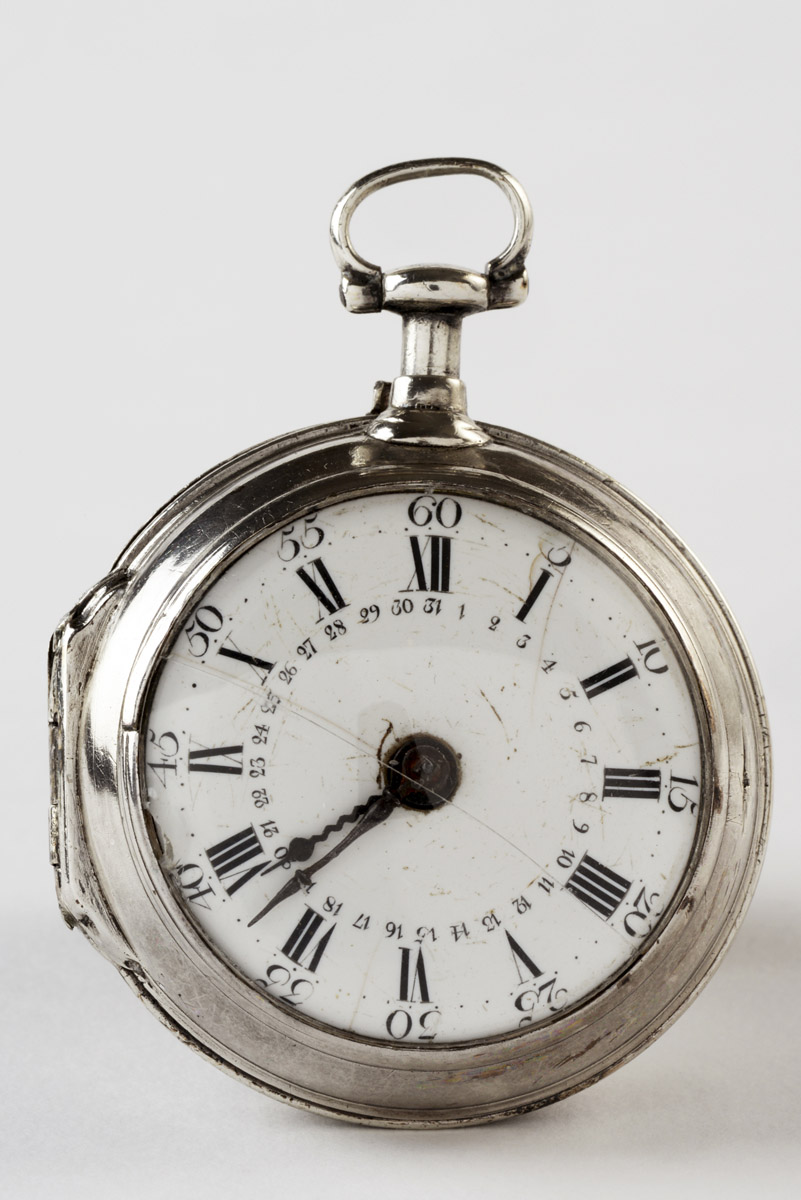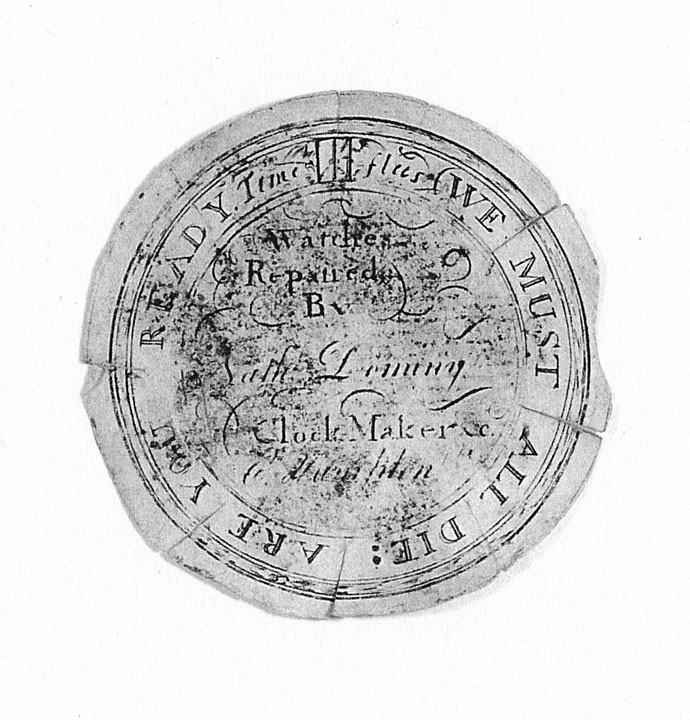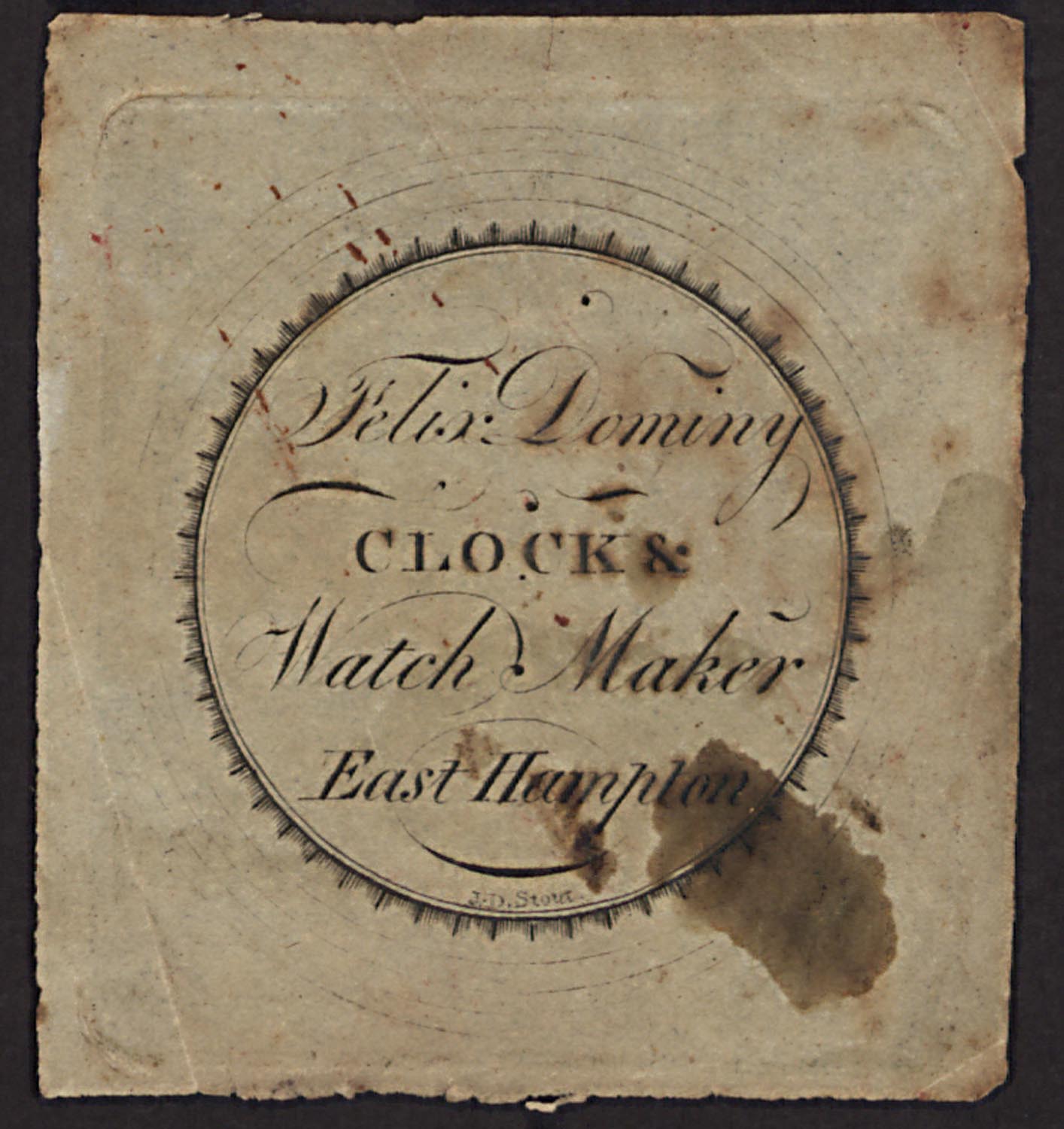Watch (1961.104)
Although the Dominys made no watches, Nathaniel IV and Felix did a brisk business repairing them. Their affordable rates—they charged less than their counterparts in New York City—attracted many clients from Suffolk County and coastal eastern Connecticut. In some years, they derived a majority of their income from this line of work.
Among the many watches Nathaniel IV mended was this one signed by Thomas Harland. An English émigré master clockmaker, Harland made clocks and watches in Norwich, Connecticut, between 1773 and 1807. Nathaniel’s watch repair records make clear that he and Felix handled a wide variety of English, French, Dutch, German, and American watches.
Inserted in the backs of watchcases, watch papers recorded the name and location of the watch repairman with the date of the repair and other information if desired. Customarily, the repairman removed the previous paper and inserted a new one each time the watch was brought in for service. In addition to documenting the repairman’s work, watch papers provided an extra layer of padding between the movement and the case, ensuring a tight fit when closed.
Watch papers and Copper engraving plate courtesy of the Joseph Downs Collection of Manuscripts and Printed Ephemera, Winterthur Library





